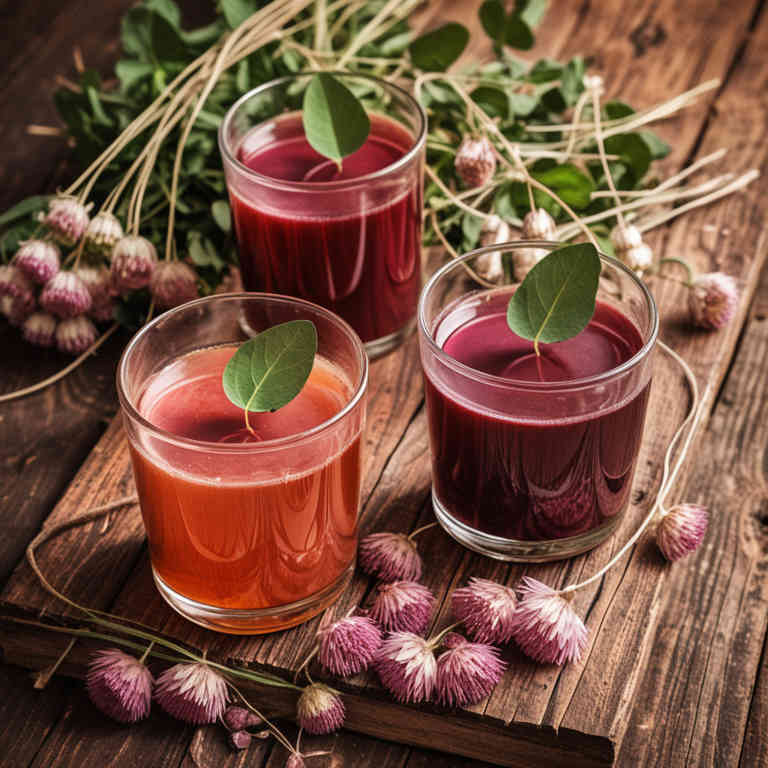Trifolium pratense juice for medicinal use

Trifolium pratense juice is a preparation made from the fresh leaves of the red clover plant, which is known for its high concentration of phytoestrogens and other bioactive compounds.
This juice is commonly used in herbalism to support hormonal balance, alleviate menopausal symptoms, and promote respiratory health. It may also be used to soothe skin irritations and reduce inflammation due to its antioxidant properties. In traditional herbal practices, it is often consumed as a tonic or applied topically for its healing effects.
However, it should be used with caution, as it may interact with certain medications or hormonal therapies.
Uses
Trifolium pratense juice has been used to treat a variety of health conditions for centuries.
Historically, it was valued in traditional medicine for its purported ability to reduce inflammation and support cardiovascular health. In ancient times, it was often consumed as a tonic to improve vitality and strengthen the circulatory system. Modern research has explored its potential benefits, including its antioxidant properties and possible effects on blood pressure.
Today, it is still used in herbal preparations to support heart health and as a natural remedy for mild digestive issues.
Benefits
Trifolium pratense juice has health benefits such as improving cardiovascular health, reducing inflammation, and enhancing overall well-being.
It is rich in antioxidants, vitamins, and minerals that support the immune system and help combat oxidative stress. The juice may also aid in lowering blood pressure and cholesterol levels, promoting heart health. Additionally, it has been traditionally used to alleviate symptoms of anxiety and fatigue.
Its natural compounds contribute to its reputation as a beneficial herbal remedy for various health conditions.
Constituents
Trifolium pratense juice active constituents include flavonoids, particularly quercetin and rutin, as well as polyphenols, vitamin C, and various minerals such as iron and manganese.
These compounds contribute to its antioxidant properties, which help neutralize free radicals in the body. The juice also contains phytoestrogens that may support hormonal balance and overall wellness. Additionally, it has anti-inflammatory effects that can aid in reducing inflammation-related conditions.
Due to its rich nutrient profile, Trifolium pratense juice is often used to promote cardiovascular health, enhance immune function, and support skin health.
Preparation
To make Trifolium pratense juice, first gather fresh red clover flowers, ensuring they are clean and free from pesticides.
Next, rinse the flowers thoroughly under running water to remove any dirt or debris. Then, blend the flowers with a small amount of water until a smooth pulp is formed. Strain the mixture through a fine mesh or cheesecloth to extract the liquid.
Finally, press the pulp gently to collect the juice, which can be consumed immediately or stored in a cool, dark place.
Side Effects
Trifolium pratense juice may lead to gastrointestinal discomfort, including nausea, vomiting, and diarrhea, particularly when consumed in large amounts.
It can also cause allergic reactions in individuals sensitive to legumes, manifesting as skin rashes, itching, or respiratory issues. Prolonged use may interfere with blood clotting, increasing the risk of bruising or bleeding. Additionally, it may interact with certain medications, such as anticoagulants, enhancing their effects.
Due to its potential for adverse effects, it is advisable to consult a healthcare professional before use.